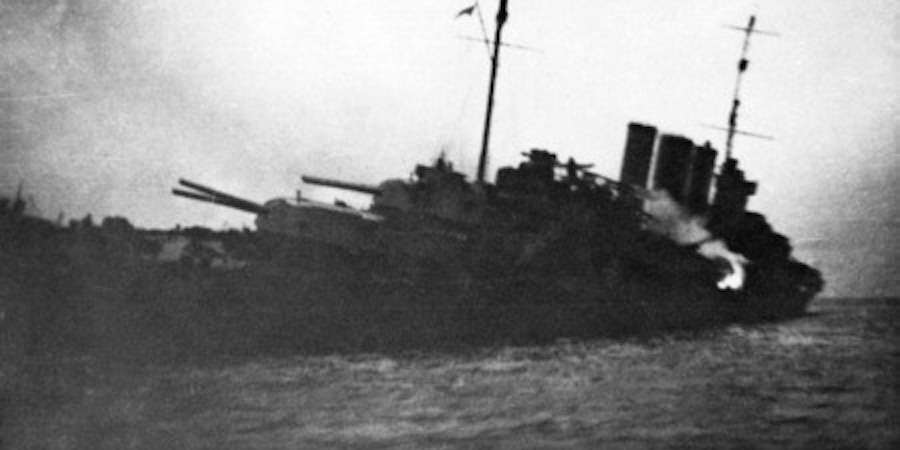The Battle of Savo Island, a crushing World War II naval defeat for the Allies, ended on August 9, 1942.
After the guns fell silent, the Japanese Navy would sink four Allied heavy cruisers, kill 1,077 sailors and damage other ships.
The battle was a pivotal one, as Allied naval forces not only suffered heavy casualties, but were also forced to withdraw their transport and cargo ships that were supplying US Marines, whom had just invaded Guadalcanal two days before.
A US Navy strategical and tactical analysis of the battle, which was published in 1950, praised the commanding Japanese admiral, Gunichi Mikawa, for the victory.
"Vice Admiral Mikawa was an active, quick thinking, competent commander of naval forces," the analysis said. "He thought clearly, and had considerable initiative."
The defeat stranded the Marines without supplies for about three months on Guadalcanal, which they had invaded to seize an airstrip from the Japanese that could have been used to choke off supply lines between the US and Australia.
Here's how the Battle of Savo Island went down.
Here's a map of the location of the Allied ships and the operating lines of the attacking Japanese cruiser force charged with taking out the Allied transport and cargo ships.

Shortly after midnight on August 9th, Vice Admiral Gunichi Mikawa, who was in command of the attacking Japanese cruiser force, slipped his column between the USS Blue and Ralph Talbot destroyers and their radars, positioning his ships for an attack on the Allies' Southern Force.

Source:US Navy
Using aerial flares and spotlights to illuminate and target the Allied ships, Mikawa ordered the opening salvo at 1:38 a.m.

The Japanese cruiser Chokai fired four torpedoes at the USS Chicago and Australian HMAS Canberra, but they all missed.

Source:US Navy
For the next few hours, the large battle unfolded as Makawi's column took on the Allied Southern and Northern Force, and the two naval forces exchanged heavy torpedoes and gunfire.

In the course of the battle, Mikawa's column would sink the USS Vincennes, the USS Astoria and the USS Quincy.

The Japanese column, on the other hand, only suffered minor damage to the Chokai, Aoba, Kinugasa cruisers, as well as the Yubari and Tenryu destroyers.
Source:US Navy
The USS Chicago and other Allied ships were also damaged.

And the Allies lost 1,077 sailors, while the Japanese only lost somewhere between 58 and 129 sailors.

Source: Warhistoryonline.com
The HMAS Canberra also sunk, having taken about 24 8-inch and 4.7-inch hits.

But the Canberra was sunk, or scuttled, by the USS Ellet and USS Selfridge because the Australian cruiser so damaged.

With the Allied transport and cargo ships unprotected, Admiral Richmond Turner ordered their withdrawal, leaving the US Marines stranded and unsupplied on Guadalcanal for nearly three months.

But Mikawa also mistakingly removed his column, worried that American aircraft carriers were in the area, of which the US Navy analysis took notice.
"Content with a tactical success [Mikawa] failed to exploit the strategical situation by destroying the transports and cargo ships," the analysis said.
"He had such apprehension of carrier-based air power as to allow it to seriously affect his judgment," the analysis added. "This apprehension was principally responsible for his decision to retire and it may have been responsible for his decision to attack the screening forces in lieu of the transports and cargo ships."
Source:US Navy

